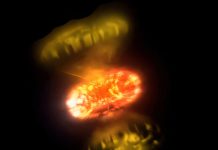
Uranus’ moon Ariel may look like a frozen, airless world today, but new research suggests that beneath its icy crust, it may once have held an ocean more than 100 miles (170 kilometers) deep.
That would make it vastly deeper than Earth’s oceans—the Pacific, for comparison, averages about 2.5 miles (4 kilometers).
The study, published in Icarus, explored the history of Ariel’s interior and how its orbit around Uranus may have shaped the surface features scientists see today.
The results add to growing evidence that Uranus’ moons could once have been ocean worlds.
Ariel is the brightest and second-closest moon of Uranus. At 720 miles (1,159 kilometers) wide, it is the fourth-largest moon in the system.
Its surface is striking: heavily cratered in some regions, but also marked by younger terrain that may have been smoothed by cryovolcanism—ice behaving like lava.
Large ridges, fractures, and deep grabens (sunken blocks of crust) scar its surface on a scale rarely seen elsewhere in the solar system.
“It’s this dramatic surface that caught our attention,” said Caleb Strom, lead author of the study. Strom and colleagues wanted to know what kind of stresses Ariel experienced in its past to create such features.
Using computer models, the team studied how Ariel’s orbit around Uranus may have caused it to stretch and squeeze as it shifted from a near-spherical shape to a slightly elongated one and back again.
This process, known as tidal stress, can fracture a moon’s surface if strong enough.
The models showed that Ariel’s orbit in the past must have been much more eccentric—less circular—than it is today.
Specifically, the moon would have needed an eccentricity of about 0.04, roughly 40 times greater than its current value. That is four times more eccentric than Europa, Jupiter’s moon famous for its cracked, ice-covered surface created by tidal forces.
“To produce the fractures we see on Ariel, there had to be an ocean beneath the ice,” said co-author Alex Patthoff of the Planetary Science Institute. “Either a thin ice shell over a large ocean, or a smaller ocean combined with a more eccentric orbit—but either way, an ocean is required.”
This is not the first Uranian moon to show signs of a watery past. The same team published similar findings for Miranda, another of Uranus’ moons, last year. Together, Ariel and Miranda could represent a pair of “twin ocean worlds” orbiting the distant planet.
So far, only the southern hemispheres of these moons have been imaged by spacecraft. The researchers believe their results can help predict what a future mission to Uranus might discover on the unexplored northern hemispheres.
“Ultimately, we need to go back,” said co-author Tom Nordheim of Johns Hopkins University Applied Physics Laboratory. “The Uranus system may hold hidden oceans, and the only way to know for sure is to explore.”
Source: KSR.



